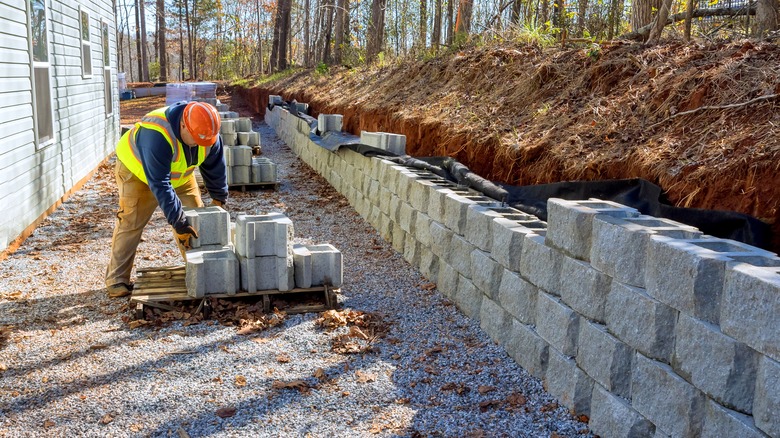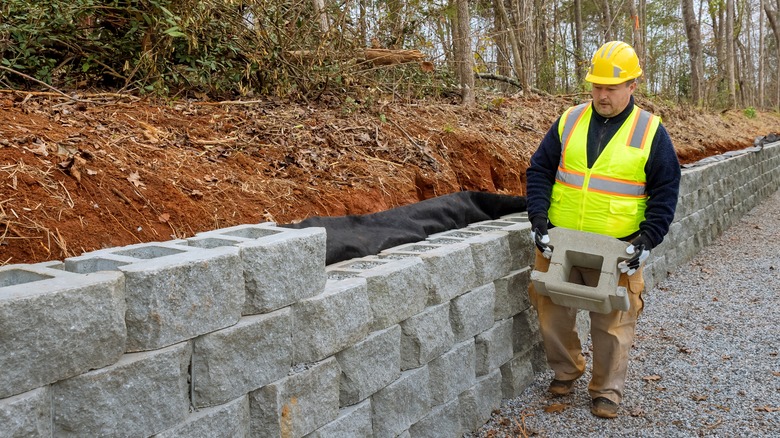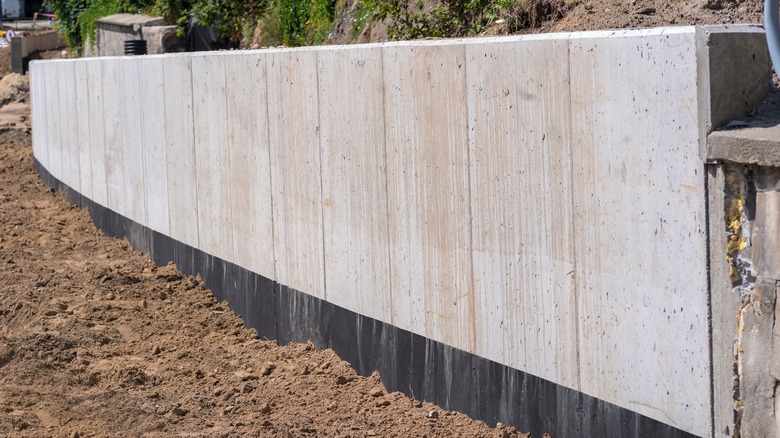Protect Your Outdoor Landscape With A Concrete Retaining Wall
Retaining walls are an indispensable feature for properties with sloped landscapes. They enhance the functionality and enjoyment of a sloped yard by allowing you to create a flat surface. This makes gardening on a slope much easier, and gives you a flat surface on which to dine alfresco. Retaining walls also help hold back steeply sloped soil, and control soil erosion and drainage. If you've decided to add a retaining wall to your yard, you'll inevitably ponder the question of materiality. Since these walls hold the soil behind them, strength should be one of the things you consider when choosing a retaining wall material. And when it comes to strength, no other material can match concrete.
You have two options for building a retaining wall with concrete. If you're set on getting the job done yourself without professional assistance, using concrete blocks is the way to go. Concrete blocks lend themselves to easy DIY installation because the concrete is already cured and ready to go — all you need to do is excavate, prepare the base, and get a helper to assist with laying the block courses. Another concrete option is to pour the wall in place. The benefits of a cast-in-place wall include better strength at taller heights (concrete block walls are generally limited in height to 4 feet) and strength. However, pouring concrete requires precision, and skilled labor and specialized materials, so it's a job best left for professionals. Below, we'll discuss both concrete retaining wall ideas in greater depth.
Concrete block retaining walls
A concrete block retaining wall comprises Concrete Masonry Units (CMUs) — blocks made of concrete. In a retaining wall, these blocks are stacked together in several courses, and capped off with a concrete capstone at the top. The blocks are hollow, which makes them lightweight and easy enough to handle during installation. The other benefit of the hollow core is that you can choose to place reinforcing steel bars into them after the wall has been erected.
CMUs are arguably the best type of concrete to use if you're adding a retaining wall to your sloped backyard. Ease of installation is the key advantage. Unlike with cast-in-place concrete walls, you don't need to worry about setting up formwork, ordering concrete from the plant, then pouring it and allowing it to cure properly. Instead, you simply stack the CMUs course after course until achieving the desired height. This is something you can do on your own if you don't mind utilizing a bit of elbow grease; and if a partner is willing to help, then so much the better.
Another advantage of CMU retaining walls is their flexibility. Where a crack is typically a death sentence for a poured wall, a damaged concrete block is easy enough to replace. That said, concrete blocks come with a major limitation. They are not ideal for tall walls, and should not be used to build walls taller than 4 feet. Note, however, that most jurisdictions require permits and engineering drawings for all retaining walls over 3 to 4 feet in height, especially if the soil behind them supports a surcharge (a load, such as a house or shed).
Cast-in-place concrete retaining walls
Cast-in-place concrete retaining walls are built by pouring a liquid concrete mix into forms. Before pouring, steel rebar is usually placed into the forms according to an engineer's specifications. Then, the crews pour the concrete from the truck into the forms, and allow it to cure before stripping the molds away. These walls are subject to the same permitting requirements as their block counterparts.
A key advantage of opting for cast-in-place concrete over concrete blocks is the strength relative to height. Tall retaining walls are inherently stronger when they're made with cast-in-place concrete as opposed to block. Thanks to different admixtures, contractors can enhance the quality of the concrete and make it less susceptible to moisture. And if you're worried about ruining your backyard's visual appeal with an ugly blob of gray concrete, don't fret — these days, concrete walls can come in a variety of colors and textures.
However, poured concrete retaining walls have a few drawbacks you must fully understand before opting for this concrete type. The crucial one is that a failure in one place generally dooms the entire wall. Cracks that develop over time are incredibly hard to fix, and some engineers will write off the entire structure if such flaws appear. Yet another issue is that elaborate, curved designs are more difficult and expensive to achieve with poured retaining walls. For example, whereas you can stack CMUs to create a radius wall, doing so with cast-in-place concrete requires specialized forms to be made just for this task — and you'll be paying for the custom job.


